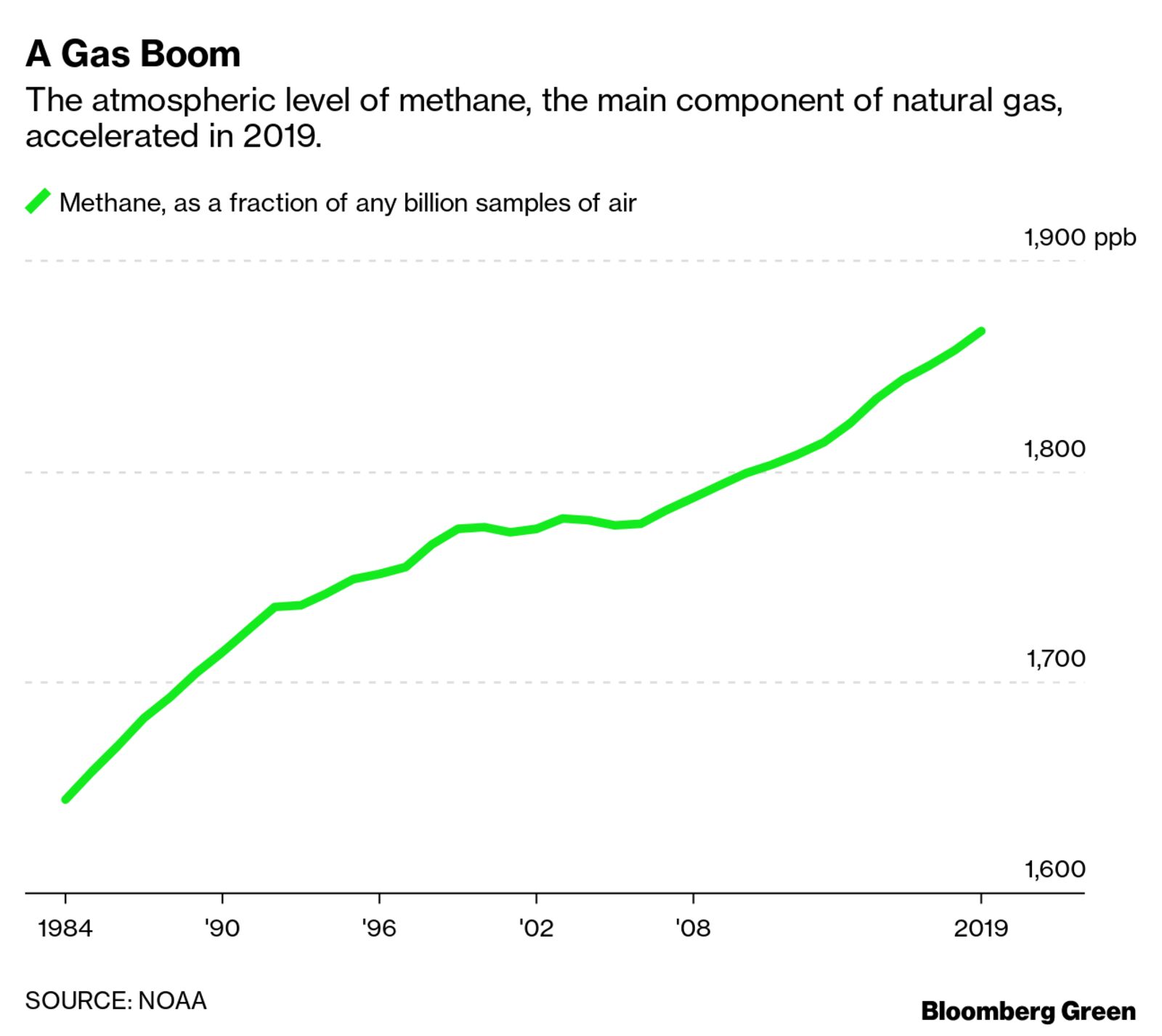Airborne methane levels rose markedly last year, according to a preliminary estimate published today by the U.S. National Oceanic and Atmospheric Administration. The results show a dramatic leap in concentration of the second most-powerful greenhouse gas, which is emitted from both industrial and natural sources.

“Last year’s jump in methane is one of the biggest we’ve seen over the past twenty years,” said Rob Jackson, professor of Earth system science at Stanford University and chair of the Global Carbon Project. “It’s too early to say why, but increases from both agriculture and natural gas use are likely. Natural gas consumption surged more than two percent last year.” Methane levels have accelerated twice in the last 15 years, first in 2007 and again in 2014. Scientists have yet to pinpoint the exact cause (or causes). Virtually every contributor to the global methane problem may play a role, from the oil-and-gas industry to human agriculture to wetlands changing with the climate.
Methane is about 25 times more powerful a heat-trapping gas than its nearest competitor—carbon dioxide—when extrapolated over the course of a century.
